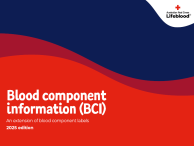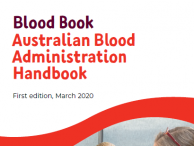Don’t have an account?
Select the donation type you’d like to make
Blood products must be stored at the appropriate temperature as shown in the following tables.
Equipment used for refrigerated or frozen storage must comply with Australian Standard AS3864 'Medical refrigeration equipment - For the storage of blood and blood products' parts 1 and 2.
Failure to follow correct storage requirements may affect transfusion efficacy, potentially cause harm to the patient or result in the product being unsuitable for use and having to be discarded.
Red cells
| Storage temperature | Shelf life | Comments |
|---|---|---|
| 2–6 ºC | Red cells: 42 days | All blood refrigerators, including theatre and other holding refrigerators, must comply with AS 3864.1, AS 3864.2 (1, 2) |
| Paediatric red cells: 35 days | ||
| Washed red cells: 28 days |
Platelets
| Storage temperature | Shelf life | Comments |
|---|---|---|
| 20–24 ºC | 7 days | Platelet components must be agitated gently and continuously in a single layer on a platelet agitator. |
Fresh frozen plasma (FFP), cryodepleted plasma, cryoprecipitate
| Storage temperature | Shelf life | Comments |
|---|---|---|
| At or below –25 ºC | 12 months | Freezers must comply with AS 3864.1 & 3864.2 (1,2). |
Fractionated plasma products
| Storage temperature | Shelf life | Comments |
|---|---|---|
| As per manufacturer's product insert | As per expiry date on product | All blood refrigerators, including theatre and other holding refrigerators must comply with AS 3864.1, AS 3864.2 (1, 2) |
Key points
- Minimise the length of time refrigerated components are outside of refrigerated storage, to ensure that maximum temperature requirements are not exceeded.
- Where possible, the time red cell components are out of controlled storage should be kept to under 30 minutes at room temperature on each occasion.
- Maintain components in a controlled temperature environment until administered.
- Handle and store components in a way that minimises the possibility of product tampering.
- Equipment must have an alarm system that activates if the temperature goes outside the required range or if the power is interrupted. The low and high alarm set points for refrigerators are typically set to 2.5 °C and 5.5 °C, for freezers to –27 °C, and platelet incubators set to 20.5 ºC and 23.5 ºC.
Updated November 2025




